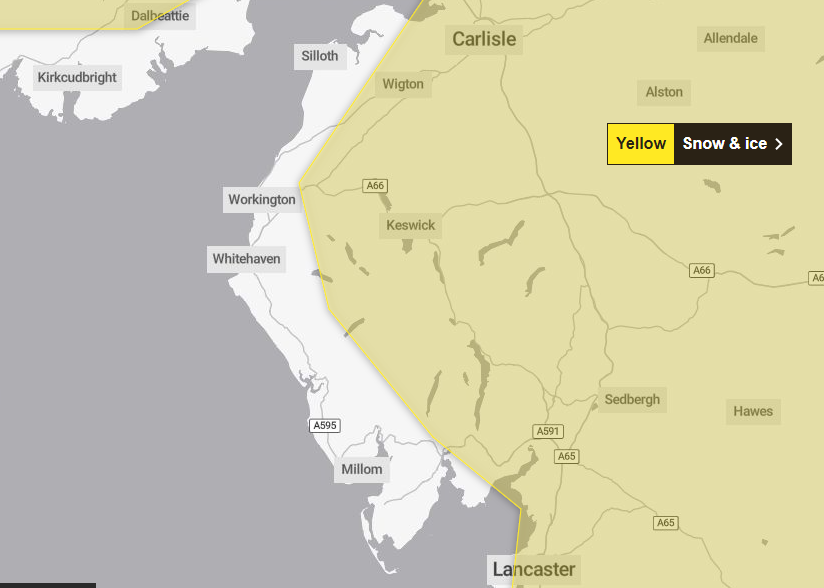
Snow and ice are expected to hit Cumbria next week.
The Met Office has issued a yellow warning for snow and ice for most of the county from 10am on Monday until Tuesday morning.
It added that there is a small chance some disruption could be caused by the wintery weather.
Spells of rain, sleet and snow are also expected during Monday and overnight into Tuesday morning.
The weather forecaster added that the most likely scenario is for most of the snow to fall on high ground, with 5cm to 10cm possible above 300 metres and as much as 15cm to 20cm above 400 metres.

It also said there was a small chance of snow settling at lower levels, where 5cm to 10cm would prove much more disruptive, but that this is very uncertain.
As rain, sleet and snow clear on Tuesday morning, ice may form on untreated surfaces.
What should I expect?
- There is a small chance that power cuts will occur and other services, such as mobile phone coverage, may be affected
- A small chance that untreated pavements and cycle paths become impassable
- There is a slight chance that some rural communities could become cut off
- There is a slight chance that bus and train services may be delayed or cancelled, with some road closures and longer journey times
- A small chance of injuries from slips and falls on icy surfaces
- There is a small chance of travel delays on roads with some stranded vehicles and passengers, along with delayed or cancelled rail and air travel
Why are weather warnings issued?
Weather warnings are issued to let people know what weather is in store for their area and what its impact could be.
The Met Office is the UK’s official weather service and is responsible for issuing weather warnings to the public.
There are three main levels of weather warning:
- Yellow – which asks people to be prepared for disruption
- Amber – which asks people to change plans that could be impacted by the weather and take action to protect themselves and their property
- Red – which is issued for weather that poses a danger to life and asks people to immediately take direct action to keep themselves and others safe from impacts of the weather
Yellow and amber warnings represent a range of impact levels and likelihoods. This means it is important for people to read each warning to know what level of impact to expect in their local area – and how likely those impacts are to occur.
The Met Office began issuing ‘impact-based’ warnings in 2011 – which means that warnings are issued when the weather may have an impact on people’s day to day lives.
Previous to this, warnings were issued to the public when certain weather thresholds or levels were reached.
Impact-based warnings take multiple factors into account – these include time of day, if it may impact traffic, time of year, if the weather is unusual, if there are any seasonal events taking place and if the area is well equipped to deal with the weather.
Each warning level is designed to help people take steps to minimise the chances of disruption in their lives.








